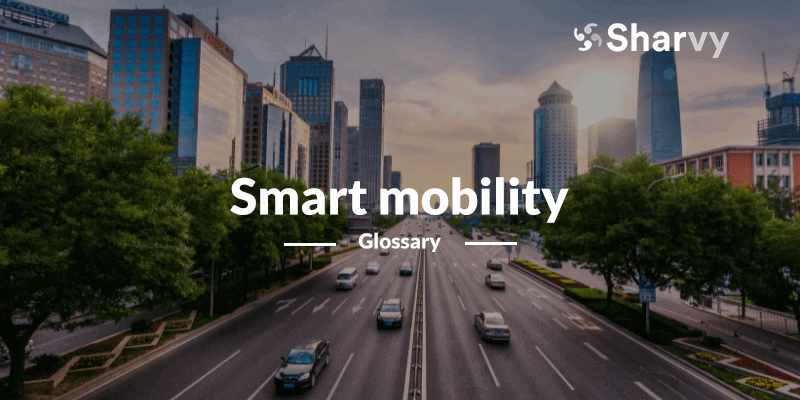What is smart mobility ? – Definition
Smart mobility, also known as “intelligent mobility,” is, without a doubt, one of the main concerns of the city of tomorrow.
Is it objective? To untie the knot of mobility and offer more oxygen to our cities.
However, to understand this concept, let’s remember that today, the growth and attractiveness of city centers have increased urban and peri-urban travel flows. As a result, cities are increasingly congested today, transport is more saturated, and mobility offers are unevenly distributed. Added to this are environmental issues and the growing desire for decarbonized mobility.
In this context, communities and public authorities must sustainably respond to these issues. This is where the notion of smart mobility comes in.
In recent years, smart mobility has become the cornerstone of smart cities. And for a good reason : it promises to make travel for city dwellers smoother, simpler, and more efficient while making it safer and more sustainable.
How will it transform our cities and improve the user experience?
On the one hand, it relies on NICs (New Information and Communication Technologies), which offer users improved and even new digital services and tools. On the other hand, it uses the opportunities metadata and IoT systems offer to provide a better experience to users.
Therefore, smart mobility encompasses both :
- Mobility as a Service (MaaS) : on a single platform, users can find the best route. Also, pay for their trip, validate their ticket, and reserve/unlock a scooter and/or an electric bike all in one place.
- On-demand mobility (MOD) : includes a set of solutions that complement public transport, whether in urban, peri-urban, or rural areas (e.g., Uber, KAROS).
- Digital services and tools for owners of personal vehicles : provision of recharging stations, optimization of tolls, improvement of urban parking, optimization of company parking, etc.
Thus, by creating synergies around these three points, smart mobility enables the traditional approach to mobility to be redefined and the user experience to be improved.
Examples of tools to develop, deploy & operate smart mobility projects!
- Smart parking lots : these indicate the available spaces to users and the type of space (PRM, bikes, motorcycles, with an electric terminal, etc.). This is to optimize the current management of parking lots and improve their occupancy rate.
- Intelligent intersections and traffic lights adjust to traffic conditions and reduce traffic jams.
- The smartphone : this is the tool that allows users to take control of their mobility. With a few clicks, they can check traffic conditions in real-time, learn about disruptions, consult public transportation schedules, reserve a ticket, find the best route, etc.
- Intelligent cameras constantly monitor the city and send real-time alerts to the relevant authorities if an incident occurs.
- Information panels : connected and installed at strategic points in the city, these panels alert and inform users of road conditions. Also, accidents, and traffic in real-time.
This list is not exhaustive! As time goes by, new technologies and additional digital services appear to improve citizens’ mobility experience. In particular, by anticipating and reducing traffic jams and improving traffic and urban safety.
Finally, the words of Jean-Pierre ORFEUIL (Professor of Urban Planning at the University of Paris-Est) perfectly underline the objective of intelligent mobility. He stating that today : “Mobility is no longer thought of in terms of moving from point A to point B, but in terms of travel, and travel must be a pleasant, user-friendly and connected experience”. This is what smart mobility is all about.

